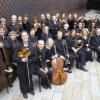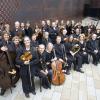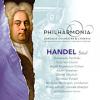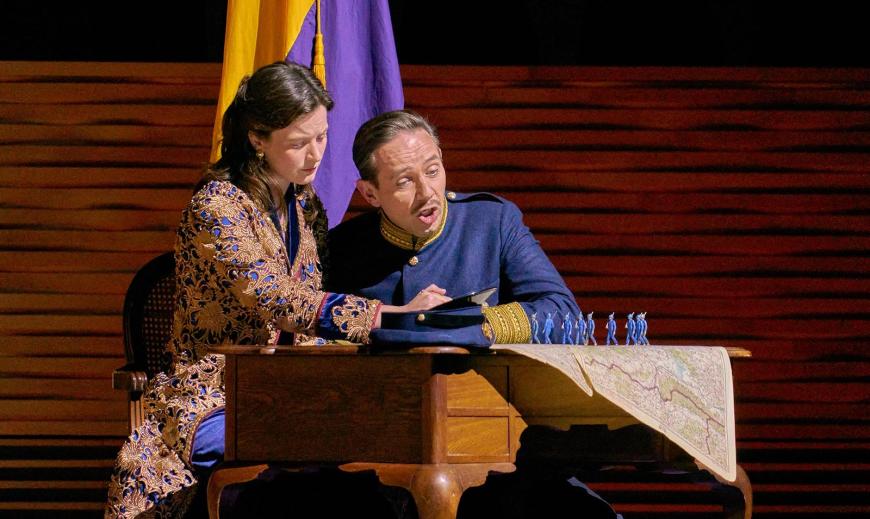
With its sprawling tale of passion and politics, warfare and tactical chess moves by lovers and leaders alike, Handel’s Radamisto is an opera writ large. Its musical range is similarly wide, with six major singing roles that demand dramatic fortitude, dazzling ornamentation, and high-stakes acting chops. The whole thing careers along from crisis to crisis, as its characters navigate a precipice between love and death, loyalty and betrayal.
Philharmonia Baroque Orchestra took up the challenge in a big way, with a four-performance run that opened April 20 and runs through April 24 at Stanford’s Bing Concert Hall. The venue’s enormous, cavern-like space invited an expansive approach. To his credit, stage director Christophe Gayral thought big without turning this tense and emotionally probing music drama into mere spectacle.
Using minimal but striking set pieces to pointed effect — a pair of elaborate golden thrones, a desk in one scene, a couch in another, two armies’ flags-turned-weapons in a battle scene — he created imaginative spaces for the action to play out. The players traversed the arena to often keen effect. (George Souglides designed the set and elegant Mediterranean-look costumes.) By raising and lowering the Bing’s semicircular platforms, the director suggested not only palace rooms, parapets, and a riverbank, but shifts of hierarchy and power as well, leading at last to a stepped rotunda of justice, where a stirring ensemble brought the three-hour production to a mighty close.
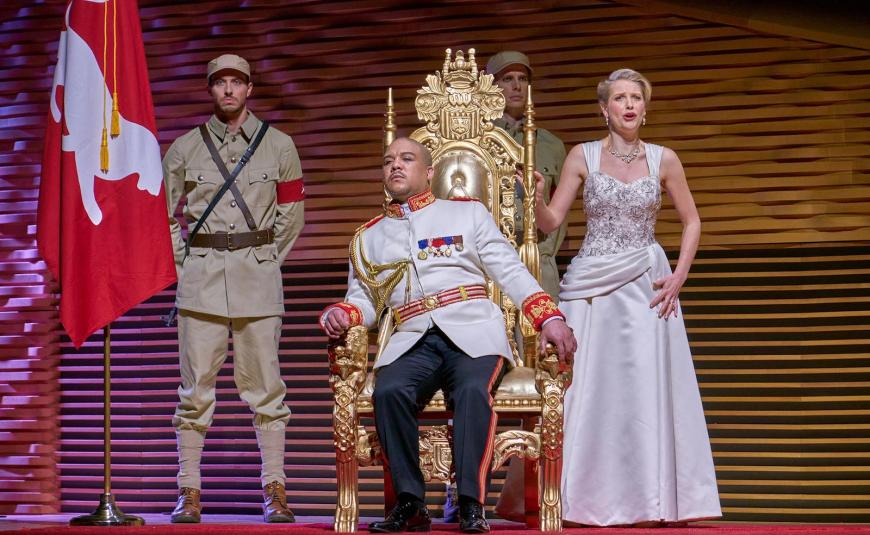
Impressive and precisely rendered as the production was in many details, the capaciousness of this Radamisto came at a cost. Lighting, in the huge space, was largely unavailing, with the singers often trailing long shadows while their faces remained half-hidden in shadow. The platforms thundered noisily as they rose and sank. A certain chilly austerity took hold.
There were musical compromises as well. With the orchestra positioned at the far side of the vast playing space, the instrumental intricacies and marvels of Handel’s 1720 score, performed here in its revised 1728 version, often felt remote. It was as if the audience were hearing the players through a kind of aural scrim.
There were coordination problems with the soloists as well. Playing in front of the orchestra meant the singers had to rely on TV monitors to see the conductor. Various entrances and tempos went out of sync. A late substitution of conductors may have further complicated matters on opening night. David Belkovski was on the podium, after PBO music director Richard Egarr withdrew due to illness.
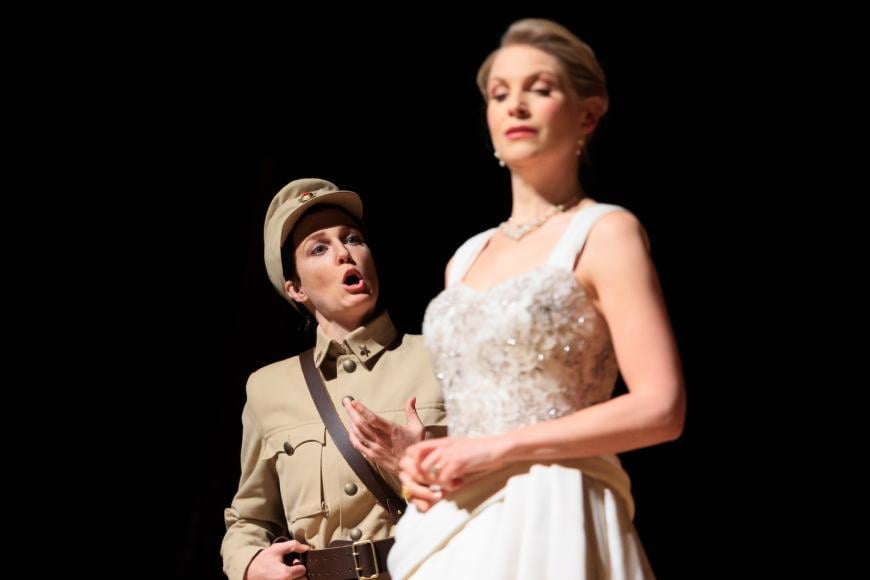
Even as the liabilities remained, the opera offered ample pleasure and impact. It began with soprano Ellie Laugharne, in powerful voice, as Polissena, the conflicted wife of the tyrannical King of Armenia. Bass-baritone Aubrey Allicock was bluntly sinister as the opera’s villain, barreling through his declarations, rolling his poisonous R’s, and officiously snapping his fingers to issue a command. His stout body type is Putin’s opposite, but his ruthlessness about anyone in his path surely brought the Russian assault on Ukraine to many listeners’ minds.
Eager to throw his wife over for Zenobia (soprano Liv Redpath), the king undertakes an elaborate blackmail scheme to win her over, targeting both Zenobia’s husband (countertenor Iestyn Davies in the title role) and her father, Farasmane (baritone Morgan Pearse). Mezzo-soprano Wallis Giunta sang the role of Pontus, a palace military figure whose turn against the evil king eventually brings about a happy ending. Love, as ever, is the magical change agent.
While the singing varied, each of the principals had some stellar, character-defining moments. Davies, whose arias tended to ripen as they unfolded, made a touching plea to his wife that she not lose hope when all seemed hopeless, the two of them on the run like refugees. Redpath, in turn, made Zenobia’s selfless insistence that Radamisto take flight had an aching intensity. Giunta was sturdy and forthright in simpler passages, and somewhat at sea in Handel’s more ornate writing. Throughout, the acting was often acutely detailed, whether in an exchange of meaningful looks, a dead-pan bluff, or a desperate gun-to-the-head impulse. In a hauntingly staged scene just before intermission, a field of apparent corpses came to life from the “fires of the abyss,” raising hope where all seemed lost.
In one of Handel’s master strokes of musical narrative, important plot turns quicken in some lean and propulsive recitative. Davies was the engine that drove the percolating action toward its climax, first in daring disguise and then as a torture victim who refuses to give in. His voice took on a kind of clarifying purity, even as the outcome remained in perilous doubt.
Maybe it was fitting that Allicock, as the tyrant, struggled and huffed his way through a late aria. By then, his victors were poised to take the stage in triumph. Harmonies, hardly heard all evening, rang out in that final clarifying scene.



